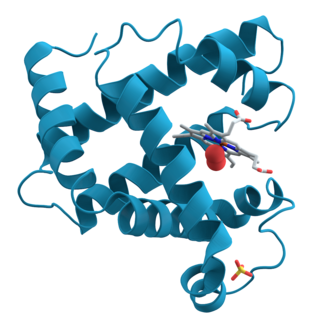Biomolecule
molecule that is produced by a living organism From Wikipedia, the free encyclopedia
Remove ads
A biomolecule is any molecule produced by a living organism. That includes large macromolecules such as proteins, polysaccharides, lipids, and nucleic acids, as well as many smaller molecules.

Biomolecules are used in biological processes such as cell division, morphogenesis, or development.[1]
Just four elements—oxygen, carbon, hydrogen, and nitrogen—make up 96% of the human body's mass. But many other elements, such as the various biometals, are also present in small (but vital) amounts.[2]
Biometals are at the heart of many biomolecules. One or two atoms of copper, zinc, iron or manganese are in the most important biological molecules.[3][4] They act as cofactors, electron donors, at the heart of key biological molecules.
Remove ads
Types of biomolecules
A huge range of biomolecules exist, including:
- Small molecules:
- Lipids, polysaccharides, glycolipids, sterols, glycerolipids
- Vitamins
- Hormones, neurotransmitters
- Metabolites
- Monomers, oligomers and polymers:
Remove ads
References
Wikiwand - on
Seamless Wikipedia browsing. On steroids.
Remove ads
